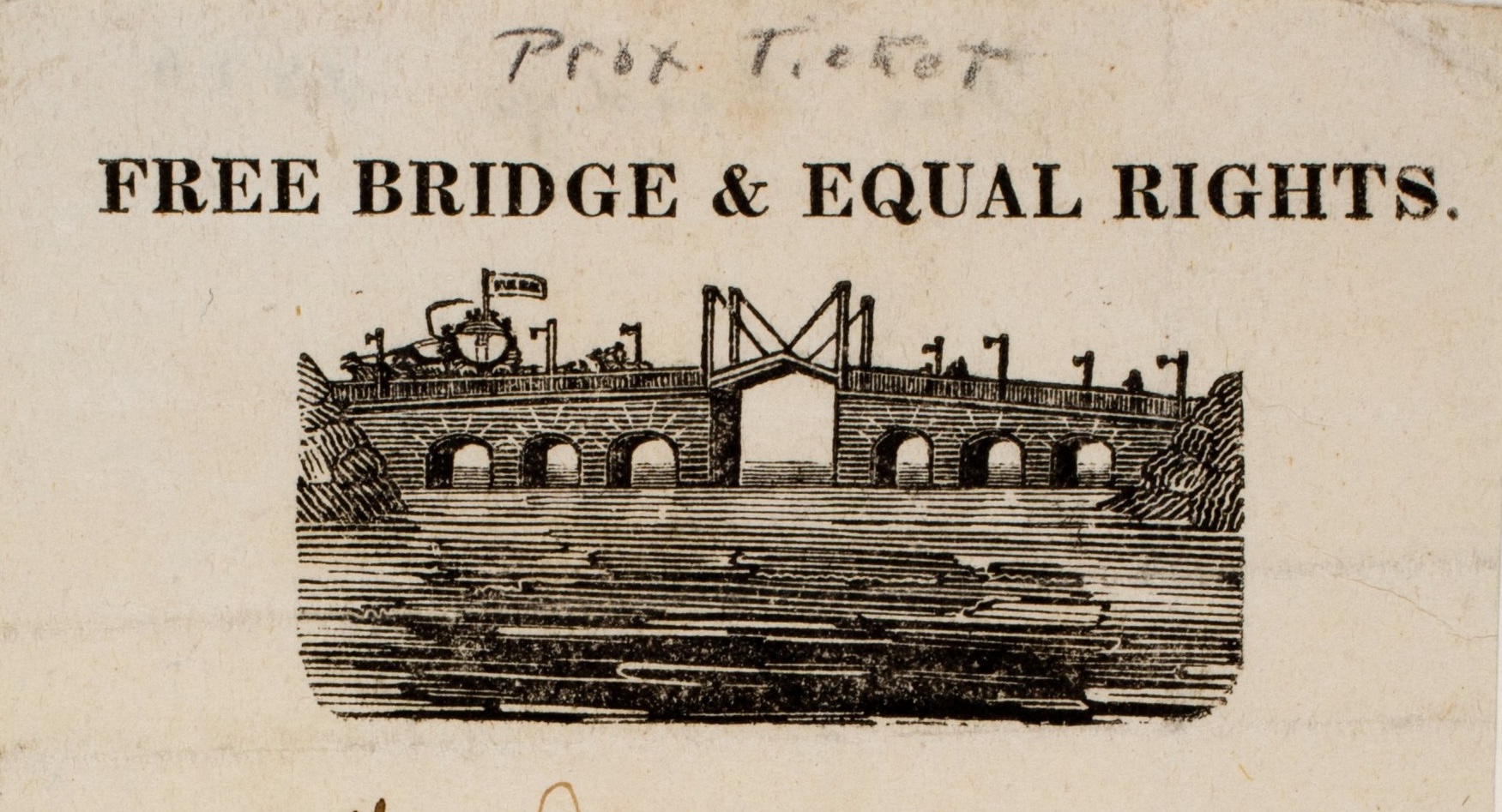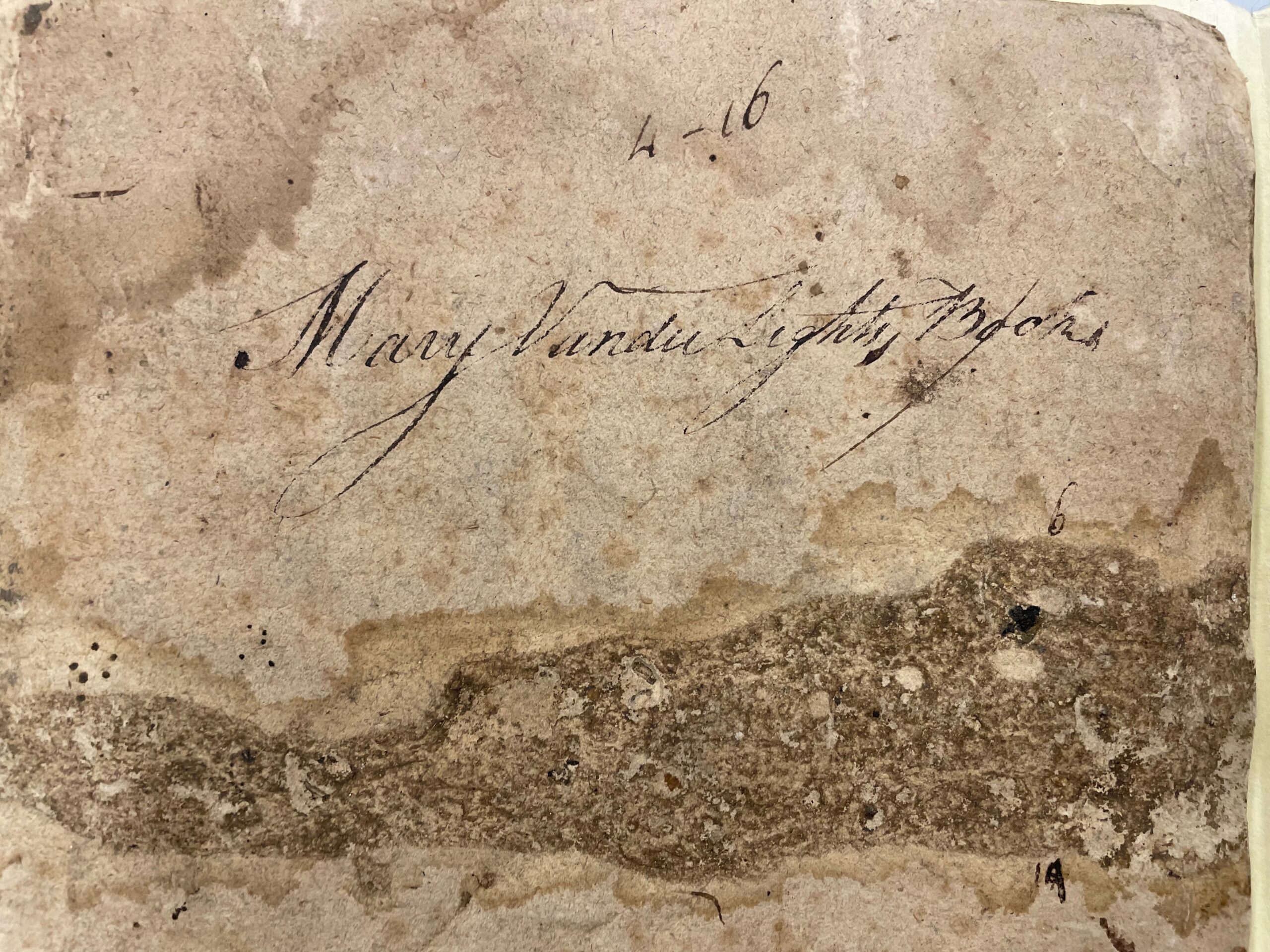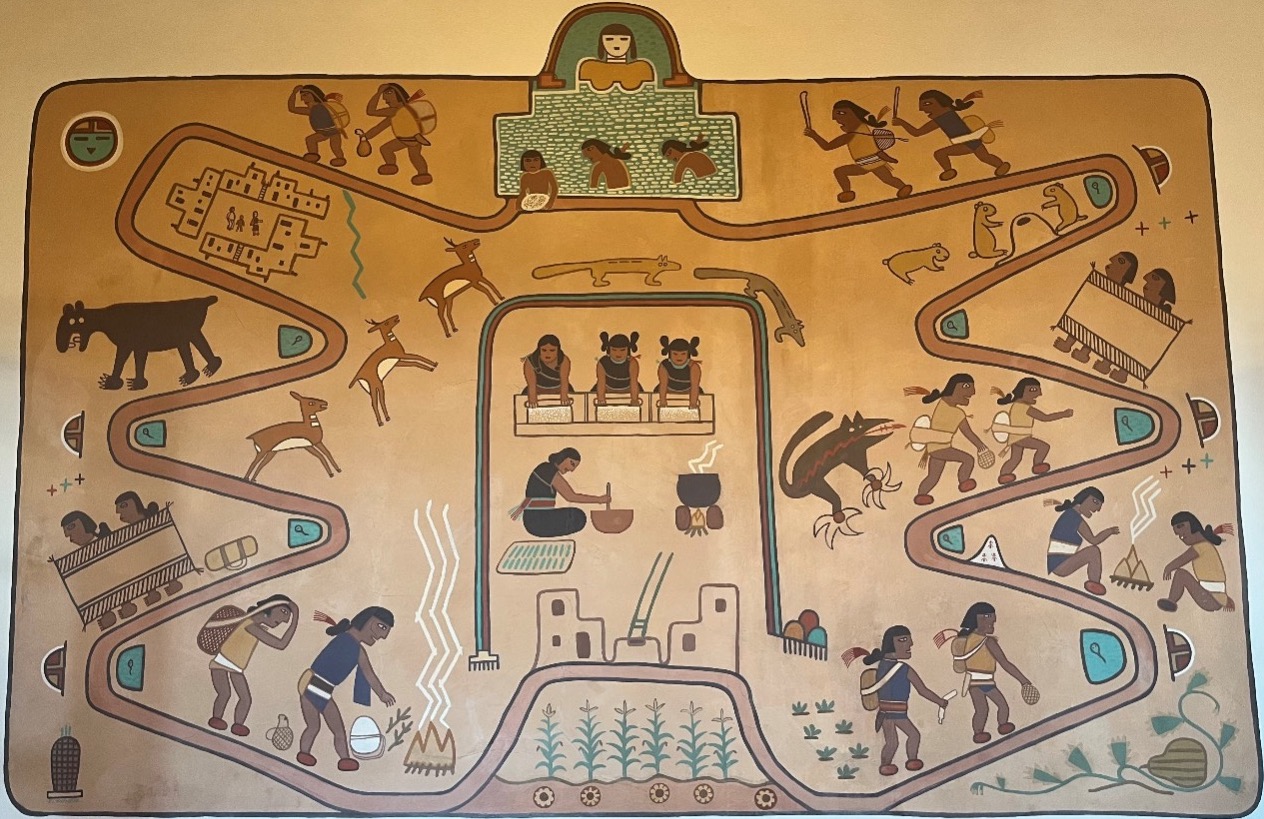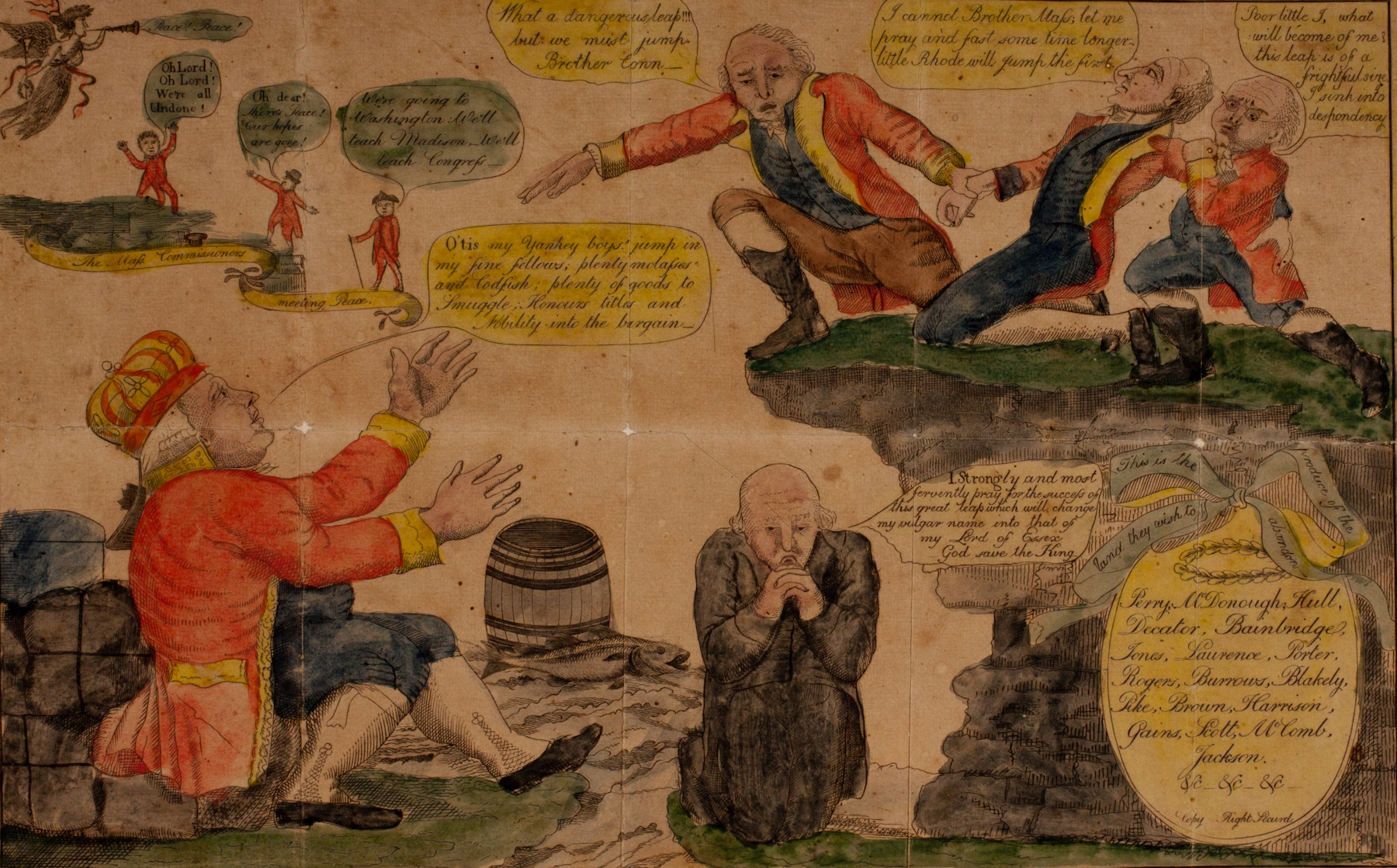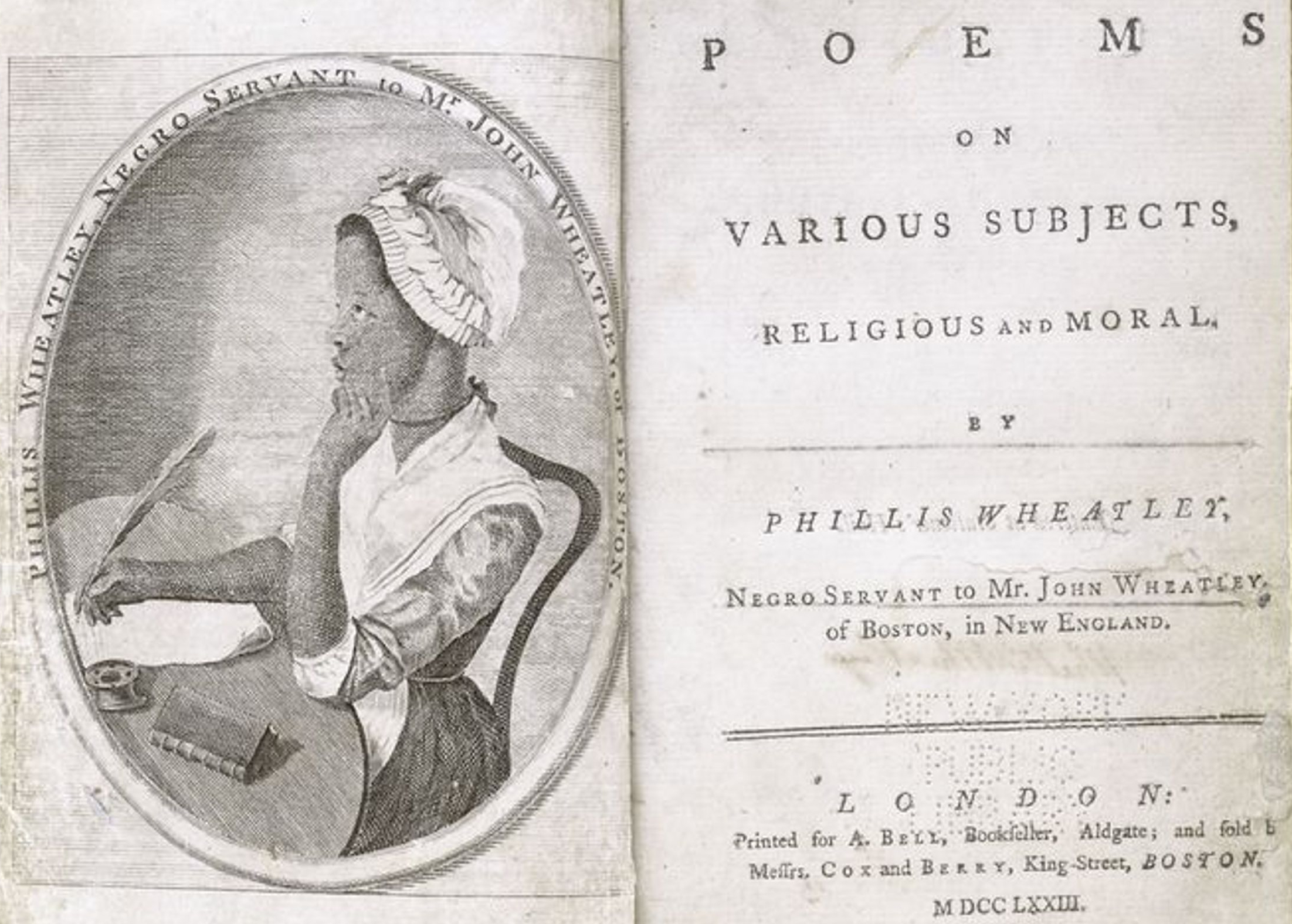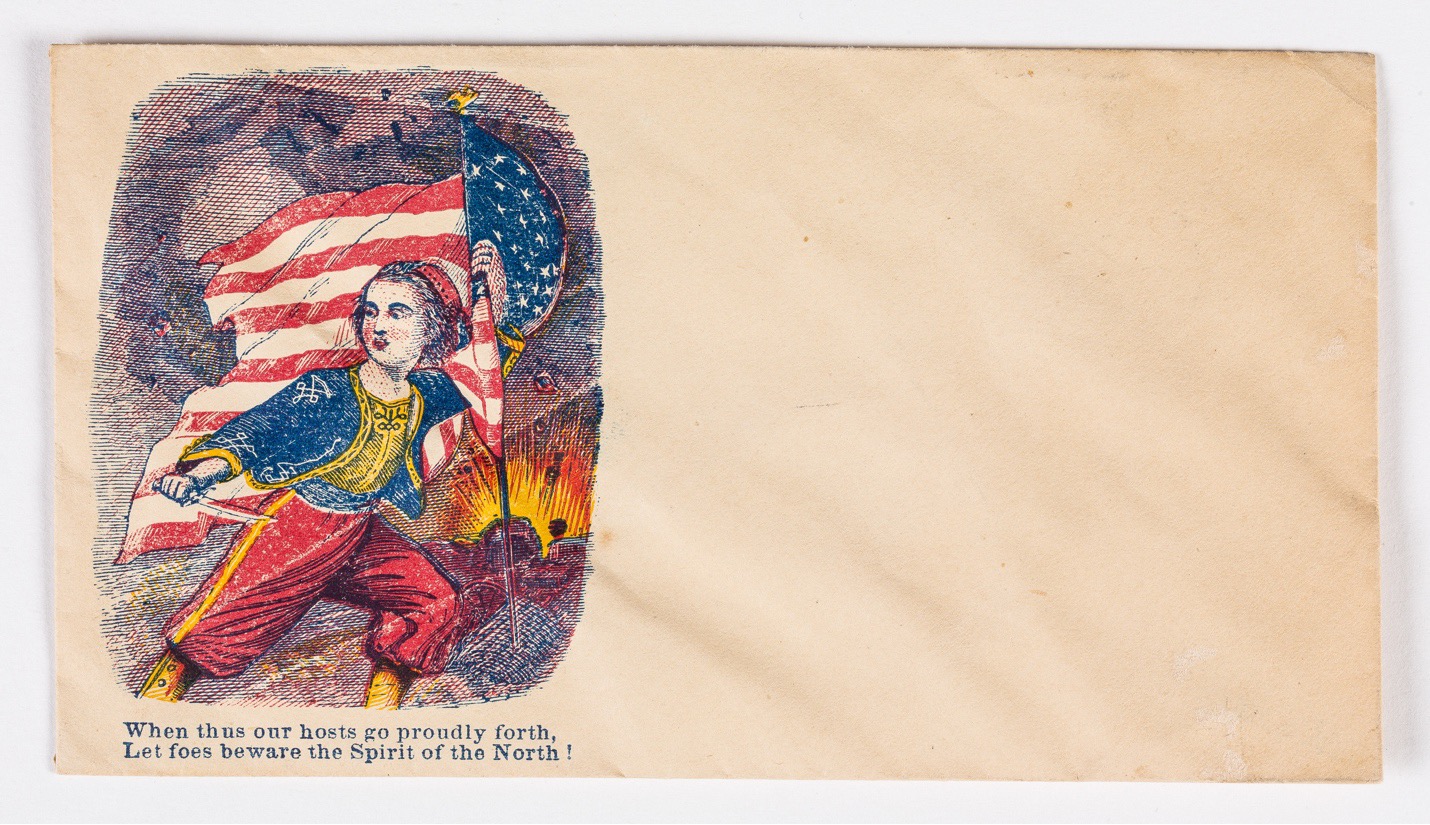American Indians and the history of the American state
Modern American political culture has no greater shibboleth than Big Government, that un-American serpent who slithered into our garden around the time of FDR, wrapping American society in its coils. “Isn’t our choice really not one of left or right, but of up or down?” Ronald Reagan once asked. “Down through the welfare state to statism, to more and more government largesse accompanied always by more government authority, less individual liberty and, ultimately, totalitarianism.” Nothing was more certain to conservatives like Reagan than that their vision of a government that did little but plan and fight wars was the original American model, “the dream conceived by our Founding Fathers.”
Though probably only a minority of professional American historians ever voted for Ronald Reagan or any politician like him, they have generally told a similar story about government’s role in the early American past. Despite the fact that this government was what the founders chiefly worked to create, the institution itself gets almost no play in typical historical narratives once the founding documents are signed. Typical historians’ attitudes are well summarized by Princeton historian John Murrin’s quip that the early U.S. government was “a midget institution in a giant land,” an insignificant force “with almost no internal functions” and no ability to effect major changes or drive historical trends. “Its role scarcely went beyond…the use of port duties and the revenue from land sales to meet its own expenses.” Murrin was building on a long tradition of scholarly riffing at the expense of the American state. Political scientist James Sterling Young’s Bancroft Prize-winning study of Jeffersonian Washington, The Washington Community, 1800-1828 (1966) cast a long shadow. “The early government was…a small institution, small almost beyond modern imagination,” Young wrote, and size mattered, he thought. “Small size indicated slightness of function.”
This “myth of statelessness,” as University of Chicago historian William Novak calls it, was a comforting and ideologically convenient interpretation for Cold War-era historians eager to turn American history into a story of expanding individual freedom that could be contrasted with Soviet authoritarianism. It proved equally convenient for so-called New Political Historians whose number-crunching approach treated voting statistics as social data and consistently concluded that antebellum politics was best understood in terms of competing religious values and ethnic identities rather than the policy debates and economic issues that previous scholars had emphasized. A weak or nearly nonexistent early American state also made an indispensable contrasting benchmark for political scientists eager to show a transformation in American governance at some later period. According to pioneering “new institutionalist” scholar Stephen Skowronek, the operations of “the early American state were all innocuous enough to make it seem as if there was no state in America at all.”
So everyone agrees. Yet for a political historian who has grown up, so to speak, after the great post-1960s expansion of mainstream history beyond its former social and racial boundaries, a question naturally occurs: how could any scholar claim to have seriously interpreted the history of the American state, without foregrounding the experience of those peoples who were first, most frequently, and most punishingly targeted by government policy in the United States? Those peoples would be the American Indians, who were subjected to U.S. government policy before the United States even had an executive branch or the power to levy taxes.
Rising State, Vanishing Americans
The early American state, the “Great Father at Washington,” did not look much like a harmless little person to the continent’s indigenous population. Without suggesting any lack of pride in their own nations or discounting the many occasions when Uncle Sam’s representatives appeared to be weak and incompetent, Indian leaders found the United States an awesome, inexorable force. This impression especially got across when Indians were directly confronted with the government’s full scope and the nation’s true size and extent. One of the most effective tactics against indigenous resistance was taking delegations from tribes it was dealing with back east to tour U.S. cities and visit the president in Washington, D.C. European travelers and subsequent historians generally derided the early capital as a “city of magnificent distances,” but native visitors were usually impressed even if there were still cows grazing at the base of Capitol Hill. “So large and beautiful was the President’s House,” said a Winnebago chief visiting John Quincy Adams in 1828, “I thought I was in heaven, and the old man there [Adams], was the Great Spirit.” Diehard Sauk resistance leader Black Hawk was taken to Washington after his capture in 1832 and went home speaking respectfully of the U.S. “war chiefs” and open to political and cultural cooperation with whites. U.S. officials were well aware of the impact these tours had on the Indians. It was noted that, before Little Crow, leader of the 1862 Dakota Sioux rebellion in Minnesota, no Indian who had been to Washington ever engaged in violence against whites again. The tactic remained generally effective even long after 1862. Writing of a recalcitrant tribe in 1888, the commissioner of Indian affairs advised that “a visit east will…open their eyes to the power of the Government [and] ‘knock the fight out of them.’”
While the early American state may seem innocuous and ineffectual by European or twentieth-century American standards, it rarely seemed puny to Native Americans who had to face myriad, overlapping projections of government power into their territories, cultures, and lives. That midget came on horseback, booted, spurred, and heavily armed, with wagon trains of bureaucrats, government-contracted missionaries, and speculators in the “public lands”—fungible commodities government policy had created out of the Indians’ quasi-communal homelands—trailing behind it. This midget somehow managed to accomplish the political subjugation and economic expropriation of the interior North American Indians and their lands, spanning the entire continent, in less than a century.
It is important that we be clear on the magnitude of the U.S. government’s gruesome achievements in this area. It has long been popular among Americans of European descent to think of the decline of the Indians as the result of some inevitable “natural process.” Romanticized beginning in the late 1700s as “vanishing Americans” whose noble but primitive civilization was picturesquely doomed by progress, militarily defeated American Indians were subjected to a kind of cultural cannibalism in which their image, history, and very names were appropriated by artists, writers, and real estate developers to ennoble and Americanize their own productions. The general idea can be seen in such still-popular images as James Fraser’s much-copied statue, The End of the Trail, and Frederic Remington’s The Scout, which mournfully overlooks downtown Kansas City from a hilltop park and serves as the city’s unofficial logo and one-time hockey mascot. In the Midwest, they slapped once panic-inducing names like Black Hawk, Sauk, Tecumseh, Shawnee, and Osceola onto towns, counties, streets, and schools seemingly within hours of these war leaders and their peoples’ defeats.
In recent times, it has become more common to blame the Indians’ alleged demise on European diseases and market forces, but from a certain angle that only amounts to a further naturalization of the conquest, which manages to subtly strengthen the European-American’s sense of having a genetically superior civilization, while simultaneously allowing him to deplore the Native American holocaust and absolve present Americans of any sense of blame for it. Biological agents played a huge role in the conquest to be sure, but within North America much of the native holocaust—a demographer’s term, not mine—was still ahead when the United States came on the scene. Demographic historian Russell Thornton estimates that the indigenous population of the present forty-eight contiguous states was approximately two million in 1492. By 1800, the first year for which Thornton finds reliable census figures, the numbers were much diminished, but there were still some six hundred thousand American Indians living across a vast territory that they still largely controlled.In certain eastern regions where first contact and virgin-soil epidemics were many generations past, notably the southeastern lands of the Creek and Cherokee nations, the Indian population was actually growing. That was a major reason Andrew Jackson and other southern leaders wanted to remove them. The rapid conquest and liquidation of this population—by force, forced relocation, and legal-economic evisceration—was the primary work of the nineteenth-century United States government, and any truly complete or coherent account of the history of the American state must take it into account. This conquest was the product of an interlocking system of government policies rather than something that happened “naturally.”
By calling attention to the awful “effectiveness” of U.S. Indian policy, I do not mean to deny the agency or resourcefulness of the peoples who were expropriated or the survival of their descendants today. Instead I use such strong language because doing otherwise risks making the struggle for the continent seem like a fairer fight, and thus more glorious to the victors, than it was. It would be terribly ironic if historians’ laudable desire to make indigenous peoples the protagonists of their own history led us to inadvertently take it easy on Uncle Sam and his policies.
Its Name Was Legion
A brief narrative of the U.S. conquest of native lands in the early republic shows just how prominent a role government played. Stalemated in the West at the end of the revolution, Alexander Hamilton’s better-financed United States government flexed its new “sinews of power” (see Max Edling’s article in this issue) against the still-unbowed Indians of the Old Northwest soon after 1789. After the disastrous defeats of Generals Josiah Harmar and Arthur St. Clair in 1790 and 1791, the budding fiscal-military state plowed its new revenues into a brand-new, much better-equipped and better-trained army, General Anthony Wayne’s United States Legion. The legion invaded the Indian confederacy’s heartland in present northwest Ohio and routed a native force at Fallen Timbers in 1794.
One of the legion’s major accomplishments in the campaign had more to do with public works than fighting. Like previous armies attacking Indians farther east in earlier wars, Wayne’s men built a road through the woods and swamps that was large and smooth enough to allow large numbers of soldiers and heavy military wagons to move north from the Ohio River and penetrate deep into Indian country.
While barely mentioned in standard accounts minimizing the early American state, military road-building was in fact one of the more crucial and extensive activities undertaken by the federal government. Once they had served their original military purposes, military roads greatly facilitated the expansion of civilian commerce and the white population into the areas where they were built. The devastation wrought by those developments was much more permanent than any battlefield setback. From 1794 on, it was standard to insert language into Indian treaties granting the United States rights-of-way to build roads through Indian land, increasing the natives’ vulnerability in multiple ways. “The road or canal can scarcely be designated, which is highly useful for military operations,” wrote secretary of war John C. Calhoun, “that is not equally required for the industry or political prosperity of the community.” While historians have paid much more attention to the slow progress of civilian government road building in the form of the National Road, it was the War Department that really had charge of national transportation development, drawing up plans for a national road network (see fig. 2 below), that led to more planning through the Survey Act of 1824 and furious lobbying for new routes and improvements to old ones.
The Battle of Fallen Timbers began a string of significant military and diplomatic moves that, over the following two decades, would gradually crush the natives’ ability to offer large-scale resistance to the United States or its settlers, while incorporating gigantic swaths of Indian territory into the United States. Despite the small size of the antebellum standing army, the government showed a remarkable ability to meet episodes of Indian resistance or noncompliance with overwhelming force. Two examples were the battles won by future presidents William Henry Harrison, at Tippecanoe in 1811, and Andrew Jackson, at Horseshoe Bend in 1814, where almost nine hundred Creeks died in the single bloodiest day of U.S.-Indian warfare ever. (Jackson’s and Harrison’s armies also built roads, later improved by the War Department.) While the United States dismally failed to “liberate” Canada or defend the East Coast during the War of 1812, the aforementioned western victories (plus Jackson’s encore against the British in New Orleans) were remarkably effective in securing the continent’s midsection from further European incursions and in destroying the remaining military capabilities of the Eastern Woodlands tribes. The United States would face many frustrations at the hands of the Indians later in the nineteenth century, but the War of 1812 was the last time that Native Americans presented a serious military threat to U.S. sovereignty.
Cultural domination and actual occupation of Indian lands by U.S. citizens was another matter, but these too came very rapidly in the wake of military defeat. The speed and scale of this displacement are truly shocking to contemplate. As of the 1795 Treaty of Greeneville, the “frontier” line between acknowledged Indian land and the areas open to white settlement still only reached partway across present-day Ohio. Large chunks of territory, even in the eastern states behind that line, belonged to the natives in law and in culture. By the 1840s, the “line” would be far beyond the Mississippi and the small Indian population behind the line largely ignored. By the early twentieth century, the United States had expropriated all the economically productive land from coast to coast, reduced the native population to barely more than one hundred thousand people, and successfully claimed total hegemony even over Indians who lived in their own homelands.
This massive cultural and demographic displacement was engineered by instrumentalities of the federal government just as much as the military conquests. Though Indians were technically sovereign in their own lands until those lands were ceded by treaty, various policies and constitutional arrangements rendered Indian lands latent U.S. territory in practice and created tremendous incentives for U.S. citizens to encroach on Indian lands. As the historian and budding radio personality Peter Onuf has argued, the system of territorial government set up in the 1780s promoted a “dynamic, expansive conception of the union” that ensured the rapid incorporation of available territory into the United States. The territorial system automatically imbued frontier areas with the legal infrastructure necessary to legitimize U.S. private-property holding, law enforcement, and military action. The system of survey and sales administered by the General Land Office and its local branches facilitated the swift commodification of frontier land and the attendant destruction of native communities.
Though U.S. laws and treaties typically forbade whites from settling on unceded or reserved Indian land, the government’s incentives for expansion simply overwhelmed those relatively feeble protections. Both the first U.S. president and his secretary of war, Henry Knox, wanted to foster a more peaceful and stable relationship between Indians and whites and fulfill the treaty commitments they had made to the natives. Yet both Washington and Knox were life-long speculators in frontier lands, and their efforts to do the Indians justice were made in full awareness and tacit support of the fact that the United States would continue to expand at the Indians’ expense. This was the purpose of the land system they had created. In 1796, Washington approved the surveying of a boundary line between U.S. and Cherokee land with some distinctly fatalistic remarks about the permanence or meaningfulness of such a line. “The Indians urge this, the law requires it, and it ought to be done; but I believe scarcely anything short of a Chinese wall, or a line of troops, will restrain land jobbers, or the encroachment of the settlers upon the Indian territory.”
Both Federalist and Democratic-Republican presidents occasionally used troops to remove illegal settlers from Indian lands, but these moves are more accurately seen as blows for a more orderly and efficient expansion process (so officially favored speculators and the government could make more money) than as real efforts to protect the Indians or curtail expansion. Such acts of due diligence also served to buttress the U.S. claim to the international community and critics at home that the aggressive expansion of white settlement and the expropriation of the Indians were lawful and legitimate activities.
The governmental machinery set up to facilitate expansion caught the Indians up far more often than it did the white squatters on Indian land. Any native efforts to resist such encroachments, even by livestock, immediately enveloped them in the white political and legal machinery that was set up around their lands, frequently leading to violence that might or might not progress to the stage of full-scale war but almost always led to new pressures for land cessions or outright removal. Enforcement of the laws protecting Indians depended upon local courts dominated by Indian-hating white settlers who were little disposed to see any of their own punished to provide justice to the natives. Territorial militia like those Andrew Jackson led against the Red Sticks were the shock troops of this Indian removal process, and the frontier garrisons and federal officials charged with protecting the Indians on their lands often oversaw their liquidation instead.
The infamous Indian Removal Act, the first major legislation of Jackson’s presidency, only formalized and reduced the level of violence associated with a procedure that had existed since the time of Washington and Jefferson. At the same time, it was an ambitious government program that eventually required the negotiation of more than ninety separate treaties and the transportation and resettlement in the West of something on the order of one hundred thousand people, albeit often not successfully in terms of getting them there alive or establishing permanent new communities.
The Welfare State on the Range
In fairness, it might be argued that military conquest, rudimentary land management, and the extension of the legal system do not really count as “the state” in the modern sense of a centralized, bureaucratic welfare state. Yet this later kind of state, generally supposed to have emerged in America only in the early twentieth century, first emerged in Indian country more than a century earlier.
The Indians faced not only U.S. soldiers and forts but also a continental network of Indian agents and subagents, trading posts or “factories,” government-sponsored missionaries, and schools. U.S. Indian policies not only sought to control and displace Indians but also to radically reshape their cultures and lifestyles. The thrust of this “civilization policy” was precisely to transform the Indians into potential citizens of a modern liberal state: private-property-owning individuals who would disregard their tribal identities and communal economic practices. Once the natives had changed their way of life, it was hoped, they could live peacefully and perhaps invisibly among the European American population. In addition to the diplomatic and military efforts against them, Native Americans were the “beneficiaries” of what is arguably the first social program in U.S. history and the “clients” (to use a modern term from the world of social provision) of the government’s first regulatory agency and social welfare bureaucracy, the Bureau of Indian Affairs.
The scope of this social reengineering project was more or less total. Federal policymakers wanted to transform Indian agriculture, politics, religion, dress, living arrangements, gender roles, and, especially, their modes of subsistence and property holding. Begun slowly under Washington and Knox but greatly expanded by President Thomas Jefferson and his successors after 1800, the civilization program required the creation of numerous new public institutions and a new bureaucracy to manage them. A series of trade and intercourse laws created a chain of government stores (or “factories”) to supply the Indians and provide a market for the produce of their hunting. Following the practice of the British Indian Department, regional superintendents were appointed to manage U.S.-Indian relations in their area. Beneath the superintendents, a network of Indian agents was created to work with individual tribes. Through the agents or missionary groups contracted for this purpose, economic and educational assistance was provided that ideally included European farming supplies and implements, craftsmen to service this equipment and teach their skills to the natives, model farms to demonstrate more commercial and intensive European farming methods, and schools to teach English and European household economy. Run by the secretary of war in its first few decades, the complexity of the civilization program eventually led to the creation of the Bureau of Indian Affairs in 1824.
This was part of a highly ironic pattern: each new policy that looked forward to the disappearance of the “Indian problem,” whether by assimilation, removal, or whatever other means, ended up requiring more elaborate programs and more extensive bureaucracies to deal with the policy’s results. Those darn vanishing Americans just wouldn’t actually vanish. For instance, the removal of eastern Indians to the west was supposed to allow the agency system to be gradually phased out and military expenditures retrenched. Instead, troubles with the Plains tribes and unexpectedly rapid white expansion into the Plains and the Pacific Coast led to expensive wars and the reservation system, which involved the government not just sending Indian nations west but minutely controlling all of their movements and greatly expanding certain aspects of a civilization program policymakers had once hoped to let wither away. As early as 1842, the Bureau of Indian Affairs was running its own school system, with two thousand students enrolled in some fifty-two schools and more on the way.
Professionalism and reliance on expertise are two hallmarks of the modern governance systems generally thought to have emerged only in the later nineteenth century. While the early American state did not have access to university-trained professional administrators and social scientists, as they did not yet exist, the early Indian civilization program was notable for the experience and intellectual engagement of the men who designed and implemented it. President Washington had gained much direct experience with Native Americans during his time as a young frontier military officer, and Thomas Jefferson’s scientific interests are well known. Jefferson had included extensive anthropological material on the eastern Indians in his Notes on Virginia and instructed Lewis and Clark to bring back much more data on the Plains and Northwestern peoples. It was Jefferson who set out the civilization program’s full intellectual rationale and mode of operation, including the self-serving expectation that Indians in the process of civilizing would fall into debt and thus be motivated to sell more land.
While Indian agents and BIA officials later earned a terrible reputation for corruption and incompetence, the most prominent officials of the early U.S. Indian service were dedicated civil servants who eagerly sought to gain expertise on Native American culture and seem to have been sincerely and idealistically committed to the misguided cause of changing that culture. The first southern superintendent and long-time Creek agent Benjamin Hawkins gave up a political career in North Carolina to spend the rest of his life in the Creek country far beyond the boundaries of white settlement. Hawkins conceived himself as a kind of secular missionary, devoted to the cause of “bettering the [Indians’] condition.” We might usefully think of him as the civilization program’s caseworker in the Creek Country.
Thus American Indians had to confront the U.S. government’s full “stateness” long before many other Americans did. As political scientist James C. Scott so vividly showed in his book Seeing Like a State: How Certain Schemes to Improve the Human Condition Have Failed (1998), statist social engineering projects in the twentieth century were frequently and often disastrously applied by elites who had little sympathy with or understanding of the social groups and conditions their plans affected. This is not to say that the state always fails or is inherently evil or is uniquely the tool of left or right. It is to suggest that governments tend to work in terms of abstractions far more readily imposed upon people whom the dominant culture regards as inferior and whose wishes officials are not bound to respect. Contrary to popular belief, Americans need not look to the history of “totalitarian” governments abroad to understand this truth. Their own government’s relations with indigenous peoples tell the same story eloquently enough.
Adapted from a paper presented at the Society for Historians of the Early American Republic annual meeting, Worcester, Massachusetts, July 2007, and at the Policy History Conference, Charlottesville, Virginia, June 2006.
Further Reading:
The “midget institution” quotation comes from John M. Murrin, “The Great Inversion, or Court versus Country: A Comparison of the Revolution Settlements in England (1688-1721) and America (1776-1816),” in J. G. A. Pocock, ed., Three British Revolutions: 1641, 1688, 1776 (Princeton, N.J., 1980): 386-453. The “myth of statelessness” is taken down by William J. Novak in The People’s Welfare: Law and Regulation in Nineteenth-Century America (Chapel Hill, N.C., 1996) and “The Myth of the ‘Weak’ American State,” American Historical Review 113 (2008): 752-772, but was the premise of Stephen Skowronek, Building a New American State: The Expansion of National Administrative Capacities, 1877-1920 (Cambridge, 1982).
On the “vanishing American” trope and other ideas that have guided political history away from taking much account of the American Indian experience, see Robert J. Berkhofer Jr., The White Man’s Indian: Images of the American Indian From Columbus to the Present (New York, 1979); Brian W. Dippie, The Vanishing American: White Attitudes and U.S. Indian Policy (Middletown, Conn., 1982); and Gordon M. Sayre, The Indian Chief As Tragic Hero: Native Resistance and the Literatures of America, From Moctezuma to Tecumseh (Chapel Hill, N.C., 2005).
The standard historical reference on the U.S. government policies and institutions charged with managing the indigenous population is Francis Paul Prucha, The Great Father: The United States Government and the American Indians (Lincoln, Neb., 1986). Other especially illuminating works, among many, are Reginald Horsman, Expansion and American Indian Policy, 1783-1812 (Norman, Okla., 1992); Peter S. Onuf, The Origins of the Federal Republic: Jurisdictional Controversies in the United States, 1775-1787 (Philadelphia, 1983); Jeffrey Ostler, The Plains Sioux and U.S. Colonialism From Lewis and Clark to Wounded Knee (New York, 2004); Claudio Saunt, A New Order of Things: Property, Power, and the Transformation of the Creek Indians, 1733-1816 (New York, 1999); and Wiley Sword, President Washington’s Indian War: The Struggle for the Old Northwest, 1790-1795 (Norman, Okla., 1985). On the particular topic of military road building, see Harold L. Nelson, “Military Roads for War and Peace—1791-1836,” Military Affairs 19 (1955): 1-14; Francis Paul Prucha, Broadax and Bayonet: The Role of the United States Army in the Development of the Northwest, 1815-1860 (Lincoln, Neb., 1995); and W. Turrentine Jackson, Wagon Roads West: A Study of Federal Road Surveys and Construction in the Trans-Mississippi West, 1846-1869 (Lincoln, Neb., 1979). On native leaders being brought to Washington for a reality check, see Herman J. Viola, Diplomats in Buckskins: A History of Indian Delegations in Washington, D.C. (Bluffton, S.C., 1995). The Indian population statistics above come from Russell Thornton, American Indian Holocaust and Survival: A Population History Since 1492 (Norman, Okla., 1987). Finally, Patrick Griffin makes a consonant but very different argument in American Leviathan: Empire, Nation, and Revolutionary Frontier (New York, 2008). Personally, I am not sure I can go all the way from “midget” to “leviathan.”
This article originally appeared in issue 9.1 (October, 2008).
Jeffrey L. Pasley is associate professor of history at the University of Missouri and the author of “The Tyranny of Printers”: Newspaper Politics in the Early American Republic (2001), along with numerous articles and book chapters, most recently the entry on Philip Freneau in Greil Marcus’s forthcoming New Literary History of America. He is currently completing a book on the presidential election of 1796 for the University Press of Kansas and also writes the blog Publick Occurrences 2.0 for some Website called Common-place.









